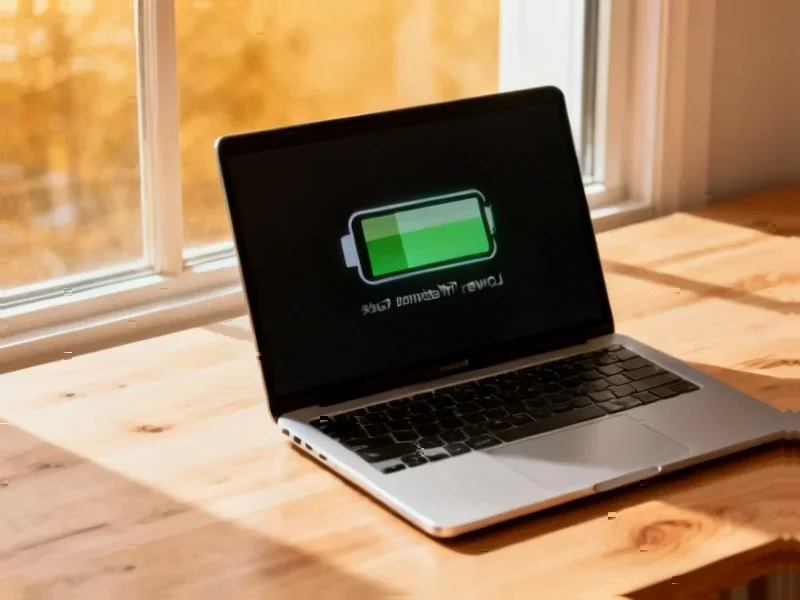According to ZDNet, Apple is actively testing a budget MacBook codenamed J700 that could launch in the first half of 2026 with prices potentially between $599 and $699. The device would use iPhone processors like the A18 Pro or A19 Pro instead of M-series chips and feature a smaller 12.9-inch LCD display rather than Liquid Retina. Apple insider Mark Gurman reports the laptop targets students, businesses, and casual users who primarily browse the internet and work on documents. Ming-Chi Kuo originally revealed the affordable MacBook plans back in July, while DigiTimes suggests production timelines have shifted from late 2025 to early 2026. The laptop may launch in multiple colors including Pink, Blue, Silver, and Yellow, breaking from Apple’s traditional design aesthetic.
Why This Could Change Everything
Here’s the thing: Apple has always been the premium player. They’ve literally vowed not to chase market share with lower-end offerings. But now? The timing couldn’t be more perfect. Windows 10 support just ended, and Microsoft is pushing everyone toward Windows 11. Many people don’t want to upgrade, and we’re already seeing some jump to Linux instead. A $600 MacBook suddenly becomes incredibly tempting compared to dealing with Windows 11’s bloat or settling for a Chromebook.
Think about the education market. Schools love Chromebooks because they’re cheap and simple. But what if they could get MacBooks for similar prices? Apple’s ecosystem, better build quality, and longer software support could make this an absolute no-brainer for school districts. And for casual users who just need something for web browsing and documents? Why wouldn’t you choose macOS over Chrome OS if the price is the same?
What You’re Giving Up
Now, there are definitely compromises. The A19 Pro chip reportedly lacks Thunderbolt support, which means you’re getting regular USB-C ports instead. That’s a big deal for people who need to connect multiple monitors or transfer large files quickly. And an LCD screen instead of Liquid Retina? The display quality will definitely take a hit.
But honestly, for the target audience? Most students and casual users don’t need Thunderbolt. They’re plugging in a charger and maybe a USB drive occasionally. The screen might not be as vibrant, but it’ll still be a MacBook. And let’s be real – it’ll probably still look better than most budget Windows laptops and Chromebooks.
Apple’s Changing Strategy
This feels like a significant shift for Apple. They’re finally acknowledging that there’s a huge market segment they’ve been completely ignoring. With smartphone sales plateauing and iPad sales struggling against cheaper alternatives, they need new growth areas. A budget MacBook could open up an entirely new customer base.
What’s really interesting is that they’re targeting “would-be iPad buyers.” That suggests they’re recognizing that some people just prefer the traditional laptop form factor over tablets with keyboards. I’ve always thought the iPad with keyboard case was an awkward compromise – too expensive to be a tablet, too limited to be a real laptop. This new MacBook could finally solve that identity crisis.
Who Should Be Worried
Chromebook manufacturers should be terrified. Windows laptop makers in the $500-$800 range should be nervous too. Apple’s brand power combined with macOS’s simplicity and security could absolutely dominate the budget segment. People trust Apple, and if they can get that Apple experience at Chromebook prices? Game over.
The real question is whether Apple can actually hit that $599 price point while maintaining their profit margins. Using iPhone processors makes sense – they’re already mass-producing them, so the economies of scale are there. Cheaper displays and components will help. But can they resist the temptation to add just “one more feature” that pushes the price up? We’ll find out in 2026, but one thing’s clear: the budget laptop market might never be the same.




